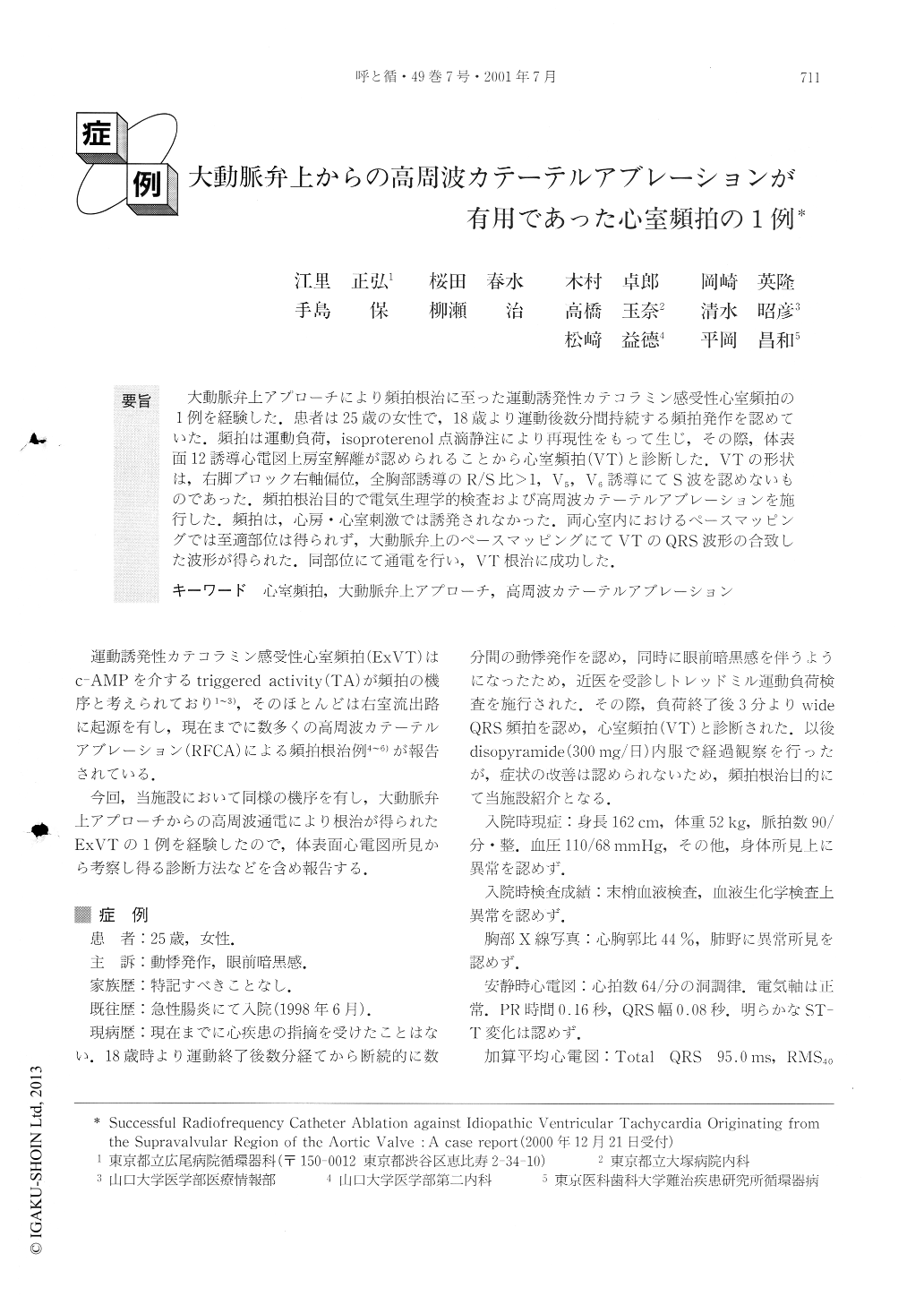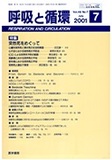Japanese
English
- 有料閲覧
- Abstract 文献概要
- 1ページ目 Look Inside
要旨 大動脈弁上アプローチにより頻拍根治に至った運動誘発性カテコラミン感受性心室頻拍の1例を経験した.患者は25歳の女性で,18歳より運動後数分間持続する頻拍発作を認めていた.頻拍は運動負荷,isoproterenol点滴静注により再現性をもって生じ,その際,体表面12誘導心電図上房室解離が認められることから心室頻拍(VT)と診断した.VTの形状は,右脚ブロック右軸偏位,全胸部誘導のR/S比>1,V5,V6誘導にてS波を認めないものであった.頻拍根治目的で電気生理学的検査および高周波カテーテルアブレーションを施行した.頻拍は,心房・心室刺激では誘発されなかった.両心室内におけるペースマッピングでは至適部位は得られず,大動脈弁上のペースマッピングにてVTのQRS波形の合致した波形が得られた.同部位にて通電を行い,VT根治に成功した.
We encountered an excercise-induced, cathecolamine-sensitive ventricular tachycardia (VT) case ablatedsuccessfully, using the supravalvular aortic approach. A25-year-old female has experienced palpitation attacks,lasting a few minites after exercise, since the age of 18.The 12 surface ECG findings were totally different fromtypical right ventricular outflow tract ventricular tachycardia : CRBBB morphology with an inferior QRSaxis but without S wave in V5-6, precordial leads andwith an R/S ratio of more than 1 in all precordial leads.Tachycardia was not able to be induced by either atrialor ventricular programmed pacing, although it wasinduced repetitively during drip infusion of isoprotercenol (ISP D.I.V.). From intracardiac recordings, wediagnosed the tachycardia as VT. Findings from theendocardial biventricular catheter mapping did not indicate the optimal site for ablation, although the findingsof 12/12 in perfect pace mapping was detected, using thesupravalvular aortic approach. Radiofrequency energyapplication from the left coronary cusp of the aorticvalve ablated the VT successfully, without significantcomplications. No VT has been induced by ISP and noepisode of recurrence has been detected so far.

Copyright © 2001, Igaku-Shoin Ltd. All rights reserved.


